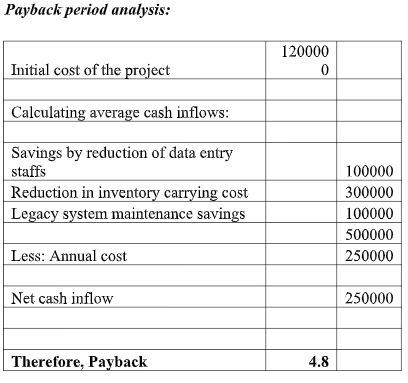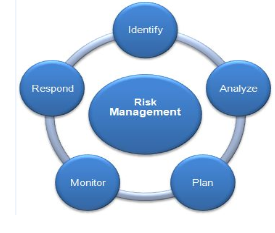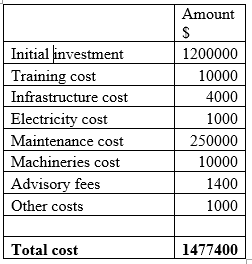Project Implementation Assignment Help
Business Problem: The order fulfillment team has been using several legacy technology systems to manage inventory and distribution. The current systems do not work together, requiring redundant information input and processing. Because of the redundant processes, work is duplicated requiring multiple data entry points and sometimes results in inaccurate and irreconcilable data. There is a constant overage or shortage of supply due to the time it takes for data to get from one point to another. This causes unhappy customers and inventory carrying costs that could be avoided.
DO YOU WANT TO HIRE TUTORS FOR ORIGINAL PROJECT IMPLEMENTATION ASSIGNMENT SOLUTION? AVAIL QUALITY PROJECT IMPLEMENTATION ASSIGNMENT WRITING SERVICE AT BEST RATES!!
Describing the measurable value
Considering the given case study, it must be stated that implementation of the SCM system is expected to generate several benefits to the company. However, the actual worth of the SCM system will be observed through proper analysis. Here, the project has been analyzed from two different angles – tangible and intangible. The analyses are done below:

If the above payback period calculation is considered, it can be noted that after 4.8 years the initial investment in this SCM project will be recovered. It means the project will not consume much time to return back the initial investment to the company. on the other hand, the calculation is also indicating the fact that the company will also be able to earn a good amount of cash inflow in each year, which means the liquidity position will be maintained within the company. This will happen because of the savings that the SCM system project will bring to the firm. At the same time, it can also be stated that as the SCM project is expected to improve the efficiency level, the revenue level of the company will also be enhanced.
Apart from the tangible benefits, there are some intangible benefits which are expected to be gained through this project. As it is estimated that the inventory carrying cost will be reduced, it is obvious that the flow of inventory will be faster. It means the efficiency level of the company will be increased (Dhir et al., 2019). The key processes will be more accurate and quality will be improved. Moreover, due to the smooth flow of work, the SCM project will enhance the speed of business activities.
Though there will be several benefits of the SCM system project, there will be some costs also. One of the major tangible costs is the initial investment. The amount of initial investment is very large, which will affect the current financial position of the company. On the other hand, SCM system will be completely new system to the staffs of the company and due to that they will face difficulties in adopting the system, which will be an intangible cost to the business (Musvoto et al., 2018). In this case the company will again require arranging for their training session, which will also generate costs to the business, which will be tangible cost to the company. Moreover, after the initiation of the SCM system the staff requirement of the company will be reduced and some of the staffs may lose their job.
However, if the analysis is made by considering the entire costs and benefits from tangible and intangible perspectives, it must be stated that the system of SCM will help the company achieving competitive advantage in the market (Pham et al., 2018). The efficiency level will be increased, quality will be improved and speed will enhance and these three will help the company generating more revenue and minimizing the cost level. Therefore, achieving the competitive advantage will be easier for the firm.
Evaluation and selection of alternatives
Though there is no specific model for implementation of any project, there are certain project management tools which can be efficiently used for successful implementation of the project. Here, two alternative methods are discussed below:
Waterfall method:
This is a step-by-step procedure through which a project can be implemented efficiently. Under this method, there are two important steps, which must be followed before final implementation of the project. These two steps are – requirements identification and designing of the new project. In the first step, the company will require to identify actual needs of the company and actual needs of the project (Reisinger, 2019). A project can be implemented when the needs of the company will match with the needs of the project. If the needs are matched the second step will be started. At this stage, a perfect design will be developed according to which the project will be implemented. At the time of designing, the management needs to take care of the primary goal of the project. After completing the design the actual implementation will be done through allocation of resources in different activities.
This will be a suitable method because it is simple to understand and follow. At the same time, this method allows proper need identification of the project before implementation, which can make implementation logical (Nguyen, & Enciso, 2018).
JIT method:
This is another alternative method that can be used for the implementation of the project. JIT or Just-in-Time is an approach through which project can be implemented by at the lowest cost and maintaining standard quality (Anagnostopoulos et al., 2018). This particular implementation technique will identify the key activities for implementation of the project and will focus on those activities only while implementing the project.
This system will be suitable because under this method the cost of implementation will be low and at the same time, the quality of the project will be maintained. Moreover, the JIT system will help in efficient use of resources during implementation of project (Nguyen, & Enciso, 2018)..
Risk assessment
At the time of initiating any project, it is obvious that there will be some risks associated with the implementation of the project. Here, the risks of implementation of the SCM project have been identified using the Enterprise Risk Management model:

Considering the above image of the ERM model, it must be stated that assessment of risk will be started with the risk identification. For SCM system, the possible risks are – financial risk that is the risk of high cost, risk of inefficiency of the workers and system failure risk. After this stage, the assessment stage will be started. During the process of assessment, the risks will be evaluated from the perspectives of different stakeholders. It will important for understanding which is riskier and which is not (Nguyen, & Enciso, 2018). For assessing the financial risk, the management will require to identify different cost units and verify the costs or each unit. At the same time, a budget will be developed to develop a plan through which revenue can be forecasted. For assessing the efficiency level of the workers a reporting system will be followed. For assessing the risk of system failure the advisory services will be considered. The third stage will be plan development. At this stage risk mitigation plan can be developed. For example, for mitigating the financial risk, the company will require to develop a large reserve for future. The fourth stage will be monitoring whether the risk mitigation strategies are being adopted efficiently by the team members of the project. Necessary steps will be required to adopt if any discrepancy is noted in the implementation activities (Anagnostopoulos et al., 2018). The last stage will be the respond stage, in which the management will respond to the findings in the monitoring stage.
Therefore, the above mentioned model is indicating that the risks associated with the project can be easily identified and managed using the model of ERM.
Description of total cost of ownership and implementation of the project
The total cost of ownership along with the implementation and continuation of the project is determined below:

The above table is indicating the total cost of ownership will be much high. The cost level of the company will be high because of the high initial investment and maintenance cost. On the other hand, considering the table, it can be stated that the implementation cost will include initial investment, training cost, infrastructure cost and electricity cost. It means total implementation cost will be $1235000. The ongoing cost will include the maintenance cost, machineries cost, advisory fees and other costs.
Benefits of the project
The tangible benefits are as follows:
• Reduced carrying cost of inventory
• Increased level of inventory turnover
• Increased revenue and profitability
The intangible benefits are as follows:
• Increased speed of work
• Increased level of quality
Recommendations
The proposal of implementation of SCM system will be beneficial for the company. This will be beneficial from financial as well as non-financial perspectives. As this will be beneficial, it will be better for the company to initiate the project. However, before that the company must provide standard quality training to the employees so that they can adopt the advanced technology in a better way. On the other hand, the company can follow the waterfall method for the implementation of the SCM project.
EXPERTSMINDS.COM GIVES ACCOUNTABILITY OF YOUR TIME AND MONEY – AVAIL TOP RESULTS ORIGINATED PROJECT IMPLEMENTATION ASSIGNMENT HELP SERVICES AT BEST RATES!!